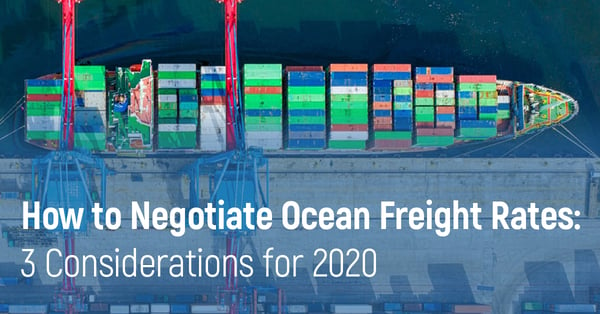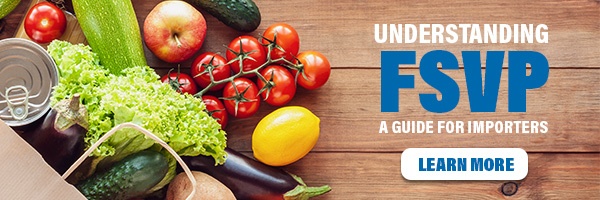
If there is one thing that can impact any import/export company’s bottom line, it’s the cost of getting their goods across the vast oceans of our big blue planet. So, how do you negotiate ocean freight rates with the best chance of success?
There are many things to consider when bidding on freight rates in 2020. Some companies bid once a year, but most companies – around 70% – bid for freight space either quarterly or monthly, depending on the details of their business and the various shipping lanes they’ll use. Of course, this is just one piece of the puzzle.
In this article, we’ll take an in-depth look at the principle factors regarding freight negotiations in 2020 – everything from timing to volumes and IMO2020.
Contract Season and Tenders
Usually, when we think of tendering freight, it’s on an annual or biannual basis. People handle freight negotiations at all times of the year, but typically, what could be considered the traditional ‘contract season’ is March through April. And companies are getting everything ready for their bids as early as January. That said, it depends on what you’re shipping. Perishable cargo (e.g., fish, meat, fruits, and vegetables) must be negotiated at a minimum of four to six months before the upcoming season.
The idea of negotiating ocean freight in the form of tenders is to try to mitigate the cost of the seasonal ups and downs – peak season prices and lull prices. We can see examples of these peaks and troughs by looking at the historical data. In 2018, average rates hit their lowest point of the year towards the end of April. Conversely, rates peaked in the middle of September and, for the most part, stayed above the $1,600 mark for Asia to North America trade lanes until the end of December.
Volume of Freight
When it comes to negotiating ocean freight rates, volume plays a significant factor. If you’re planning on negotiating direct carrier contracts, in most cases you should be shipping at least 1,000 TEU (twenty-foot equivalent units).
There are a few reasons for this. The first is the simple fact that if you are shipping a minimal amount of TEU per year, the carrier is not likely to give you any volume discount. On top of that, you won’t have the leverage to put any favorable conditions into your contract. In essence, you may end up with a toothless contract that also puts you on the shortlist for rolled cargo when the ship is overbooked.
If you are shipping less than 1,000 TEU per year, it may be to your advantage to work with a 3PL, freight forwarder, or NVOCC – or a company that is all of the above – and let them negotiate on your behalf. Instead of being a little fish swimming into a big pond, you become part of a school of fish that can push their weight around. The freight forwarding company already has a positive relationship with the steamship line running on the shipping lane you need. Additionally, your freight will add to their overall volumes, increasing their ability to negotiate better ocean freight rates for the next season.
On top of this, you are not locked into one steamship line and shipping lane. A 3PL or freight forwarder is more in tune with trade news and can help quickly modify your supply chain when something like a blank sailing occurs.
IMO 2020
The International Maritime Organization’s low sulfur regulations are upon us. As of January 1st, the new emissions standards went into effect. When negotiating ocean freight rates, this is something else to be aware of. Each steamship line is using its proprietary formula to calculate surcharges associated with the implementation of IMO 2020. The extra fees can vary depending on the trade lane and carrier you intend to use.
A recent report by Drewry showed that surcharges per TEU varied by as much as $90 on any given trade lane. Maersk Line has their EFF or Environmental Fuel Fee; HMM has dubbed their surcharge the Environmental Compliance Charge. With each carrier using different terms, different acronyms, different formulas, and fluctuating low-sulfur fuel oil prices, IMO is a new piece to an already complicated puzzle that importers are trying to put together.
Given all of the adjustments that carriers are undergoing with IMO, some experts recommend that shippers should steer clear of fixed rates for the time being. However, this may not work for everyone. Considering all the variables in 2020, talking to an expert who can help you find all the edge pieces to your ocean freight rate puzzle is an excellent first step to locking in the best ocean freight rates.



